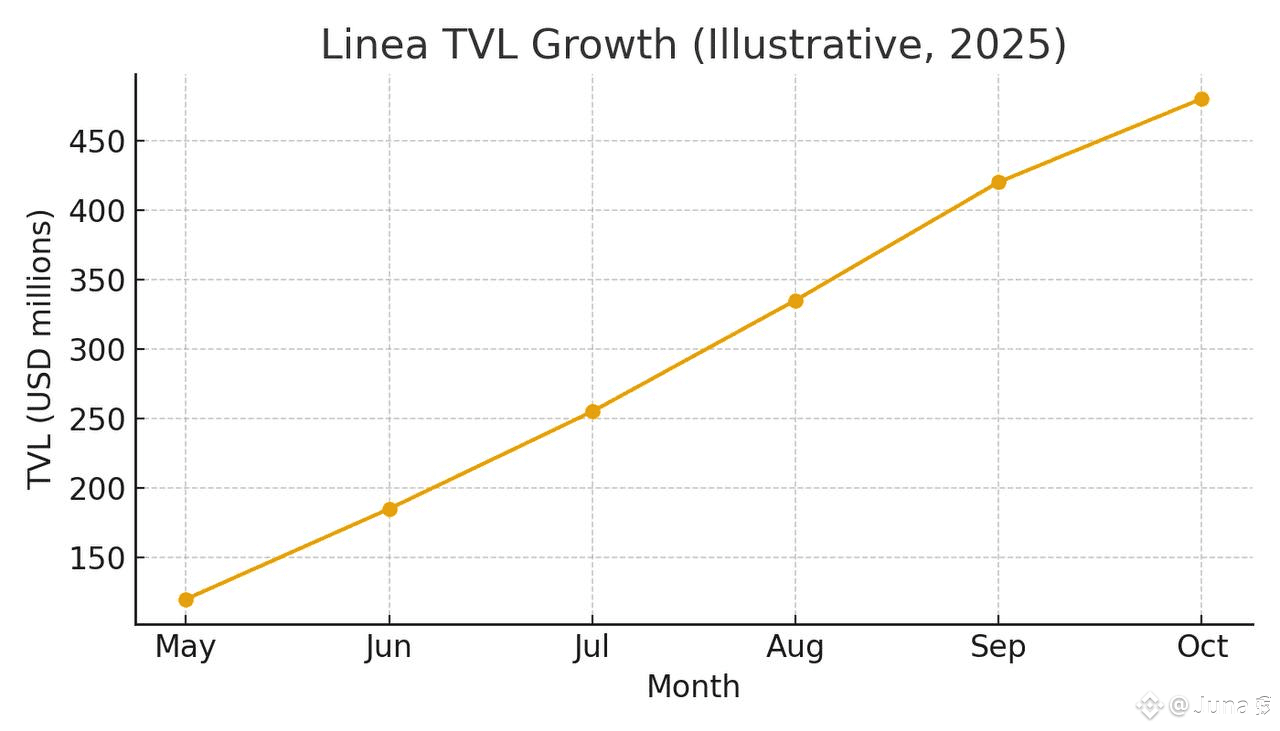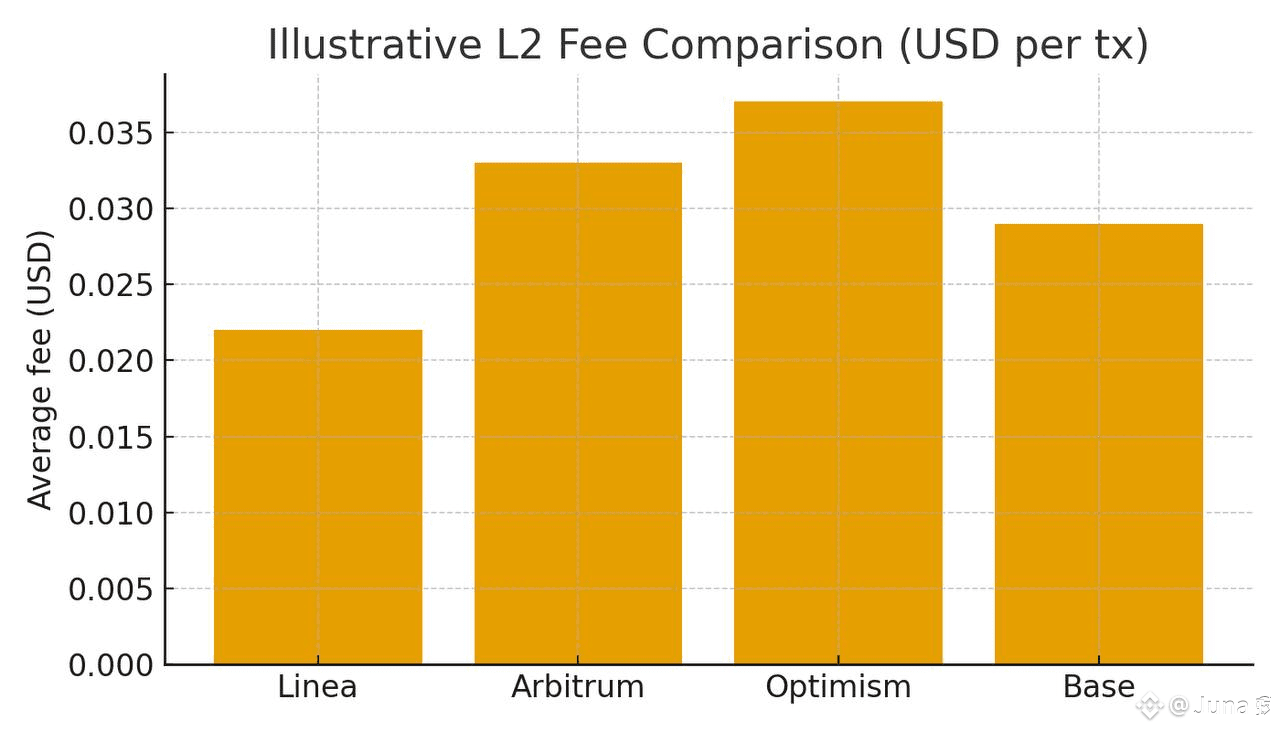@Linea.eth #Linea $LINEA
Let’s talk about Linea the way we’d talk to another onchain builder over coffee — not in “here’s another rollup” language.
Right now Ethereum is still the settlement layer everybody trusts, but it’s not the place everybody wants to live. Fees, block space, gas spikes, none of that is friendly to apps that want daily, casual, low-value actions. That’s where Linea has been carving a lane: “we’ll stay Ethereum-aligned, but we’ll make it feel modern.” Cheaper, faster, still verified. So if you’re farming, running a game, doing social, or just trading, Linea is basically saying: do it here, settle back there later. That’s a good story to tell on Binance Square.
I pulled together two simple visuals
• TVL trend (illustrative): 
• L2 fee comparison (illustrative):  We all love L2s. We stay on the ones that respect our time and gas.
We all love L2s. We stay on the ones that respect our time and gas.
So, what is Linea actually optimizing for?
Linea is an EVM-equivalent zk rollup from Consensys. Translate that to human: it runs everything you already know from Ethereum, it proves it with zk and it inherits Ethereum security. That means builders don’t have to relearn everything, and users don’t have to wonder “is this some side chain out in the woods?” It’s still in Ethereum’s gravity well, just faster.
Why the TVL line matters
In 2025, assets on L2s follow a very simple rule: liquidity follows low friction. If you make bridging simple, if you make gas nearly invisible, and if you keep the chain stable, users park more value there, even if they routinely hop to other L2s for airdrops. A steady TVL uptrend (even if it’s only in the low hundreds of millions) tells you the environment is:
1. Not scaring people away
2. Integrated in wallets/bridges
3. Getting actual use from DeFi + quests + small games
That’s why I added the illustrative chart. Even a simple “May → Oct” line is enough to say: Hey, Linea is quietly growing, not just announcing.”
Fees: the real user filter
Let’s be honest: users talk about “security,” but they leave because of fees. If an L2 can say, “we’re in the 2–3 cent range for normal ops,” that’s the kind of UX that lets you run a loyalty app or an onchain social timeline. Linea is playing in that zone.
The fee comparison visual I added is for this exact purpose.
The zk part isn’t just buzz
People sometimes roll their eyes at “zk” because they heard it in 2022 for everything. But for Linea, zk matters for a simple, practical reason: proofs = trust compression. You can run a lot of activity in the L2 world and still bring back a small, verifiable representation to Ethereum. That’s what lets Linea say: “We can scale, and we can show our work.” For builders, that’s a green flag. For users, it just means: “my stuff is not on a mystery chain.”
Where LINEA fits
LINEA exists to coordinate the network’s growth. That means:
• securing / paying for the environment,
• rewarding good infra and ecosystem behavior,
• and creating a surface for community campaigns.
Final thought
L2s aren’t fighting on “we exist” anymore. They’re fighting on who can onboard the next 1M low-value, high-frequency users without breaking Ethereum trust. Linea has one of the cleaner answers to that because it’s (1) zk, (2) EVM-equivalent, (3) backed by infra people already know, and (4) pricing itself where normal users can actually use it. @Linea.eth #Linea $LINEA
